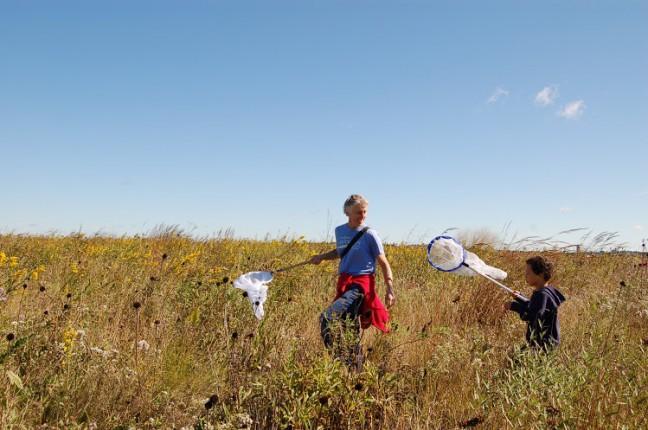While many Wisconsinites simply enjoy the beauty of Monarch butterflies passing through at the end of the summer, the Madison Audubon Society is taking a more hands-on approach with their observational efforts.
Over the past 10 years, the Monarch population has seen a 90 percent decline, Emily Meier, Madison Audubon Society spokesperson, said. In order to help track their migration patterns and determine how to best combat this decline, a program called Monarch Watch was started out of the University of Kansas.
The program involves “tagging” butterflies in particular locations, which allows researchers to determine their path if they are later recaptured. Though the program began in Kansas, it has since spread across the U.S. and into both Canada and Mexico, according to the Monarch Watch website.
The Madison Audubon Society has been involved in Monarch tagging for four years, Meier said. The process is simple, making it accessible to a wide-range of people.
Monarchs are caught while collecting nectar. Information about the Monarch’s gender and location are recorded before a small sticker with an identification number is placed on its wing, Meier said.
The first year the program was implemented, the society ordered less than 100 tagging stickers. This year, the society ordered more than 700 and received a record amount of community participation during their tagging events, Meier said.
The society encourages community members to come to their restored prairie location just outside of Madison in Arlington, Wisconsin to help tag the butterflies.
“Anyone can participate,” Meier said. “We had kids who were three years old and a woman in her nineties out there.”
The location currently has 660 acres of restored prairie where Monarchs can find numerous kinds of blooming prairie flowers.
In the past four years, four monarchs tagged through the Madison Audubon Society have been recaptured — all of them in the same small village in central Mexico, Meier said.
Findings like these suggest Monarchs follow a very particular migration path, Meier said.
“The Monarchs are driven by the fact that they need to fuel up for this 2,000 mile journey,” Meier said. “They are going to go wherever there are nectaring plants.”
Pollinators are crucial in maintaining biodiversity and keeping plant species healthy, and Monarchs are no exception.
Some native plants need pollinators to reproduce properly, just as Monarchs rely on the Milkweed plant family in order to reproduce.
Dane County task force comes together to protect pollinators
Maintaining Monarch health by limiting deforestation, roadside pesticide use and over-mowing is crucial to the survival of other plant species as well as the butterflies, according to the Monarch Watch website.
Separate from their importance to plant life, Monarchs are an iconic part of Wisconsin at the end of summertime, Meier said.
“Monarchs are part of growing up and being in Wisconsin in the summertime,” Meier said. “I don’t think people could imagine a world without these beautiful butterflies.”












